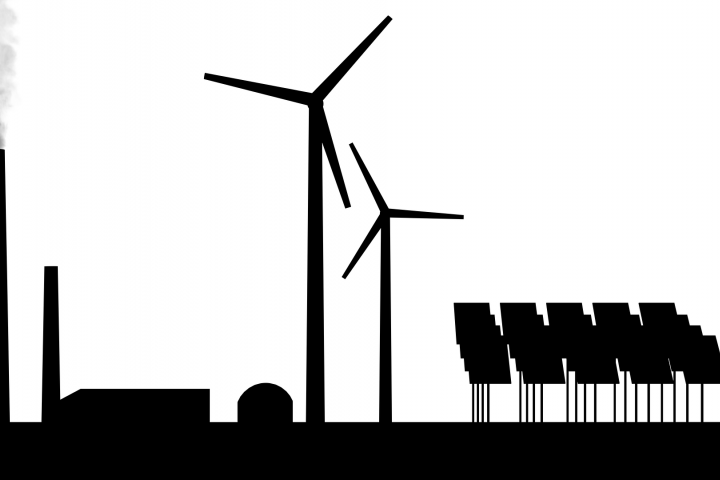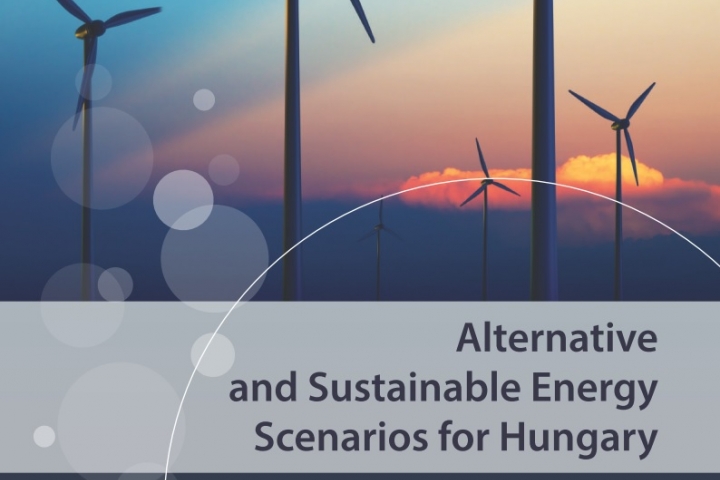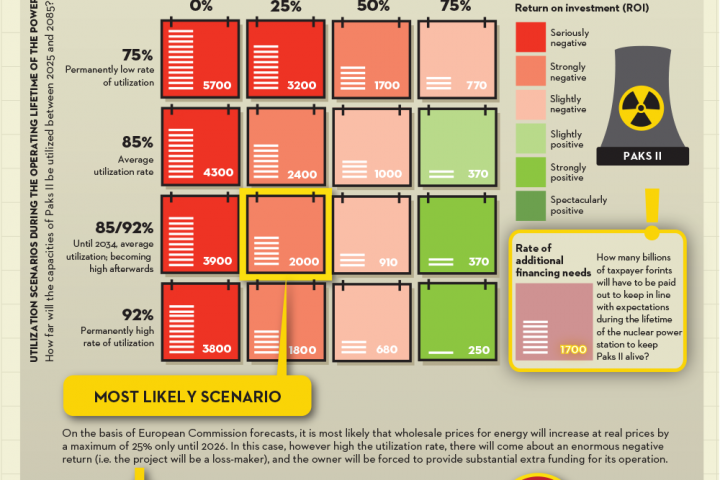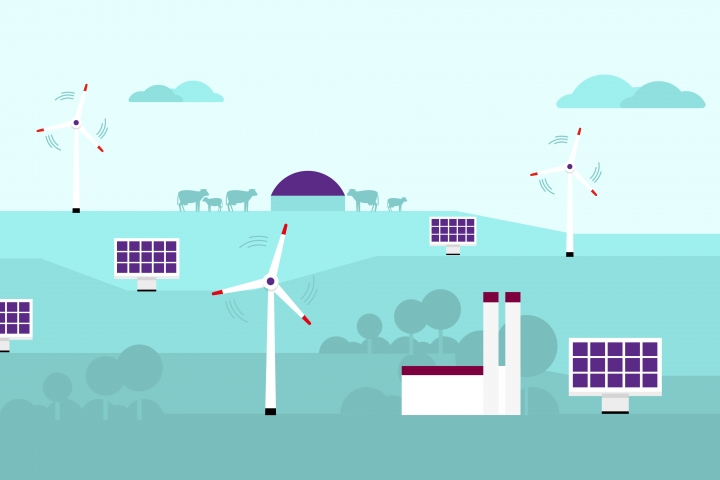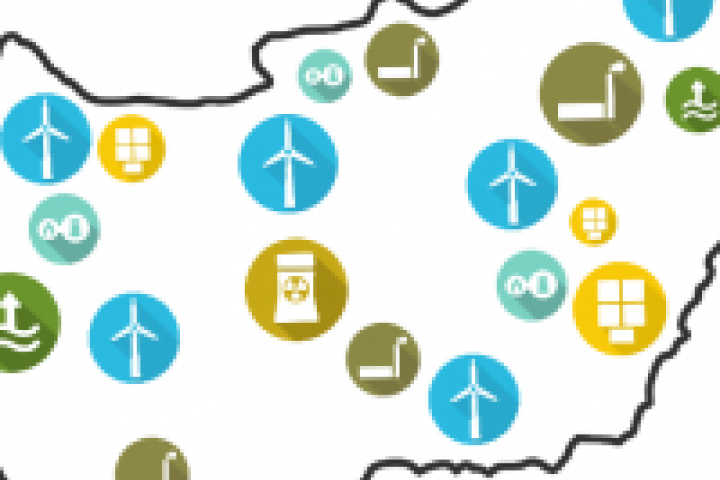Surprising data from the end days of the nuclear industry
Mycle Schneider, the coordinator and chief editor of the World Nuclear Industry Status Report (WNISR) seems to have 48-hour days. When he is not coordinating, drafting and editing the annual report, he is consulting governments, teaching at universities and holding presentations at conferences. That is why we were surprised and happy when he responded to our mail and gave an interview. We talked about surprising trends, facts versus the La-La Land, whether the nuclear sector is nearing the end – and how to know that.
The first thing statisticians are taught at university is that ‘there is no data like more data’, and that data systematically collected and controlled over a long period of time can always show the direction in which the curve is going. Is there a piece of data or a trend that you can genuinely be surprised at?
What we try to do with the Status Report is exactly to show that energy and nuclear policy analysis is a matter of the long term, so you need to look at the movie and not at the photograph in order to understand what's happening. And, as to your question, yes, it is still possible to get surprised after having done this for so long.
For example, when at the beginning of a year—2022 in this case—the industry plans to start up 15 new nuclear reactors in the world during the year but then you only get 7 by the end of the year, it shows that the building industry is not able to accurately forecast even the final construction year due to endless unplanned delays. It’s been shown in a recent paper that the nuclear industry has the longest delays amongst a selection of major infrastructure building industries. I find that surprising every year. How is it possible that actual building is so often behind schedule for the last year even? What kind of credibility do projections have then decades into the future?
The other example is about what happens in the renewable energy sector versus the nuclear power sector. India is frequently quoted as one of the countries that have been building, planning, and scheduling a large expansion of nuclear power, but nuclear electricity generation has actually slightly declined over the past few years, whereas, in 2021, solar and wind individually generated 70% more electricity than nuclear power plants in the country. It was really surprising to see how quickly these technologies have been deployed! Another very interesting surprise to me is that the Netherlands have passed Germany as the country with the most installed solar capacity per capita.
Can we compare renewable and nuclear power generation at all? Aren’t there more similarities between nuclear power and fossil fuels than between nuclear and weather-dependent renewables – mainly because of intermittency?
Actually, the term “intermittency” is much more correct for nuclear power than for most of the renewable energies. For example, a wind turbine generates power on average over 80% of the time depending on the country and other circumstances. Of course, the output is variable. For a nuclear power plant, it’s generally either operating or not operating, so it is intermittent. To give an example, the largest nuclear operator in the world, the French EDF had a load factor of only 52% in 2022! It means that on average the French nuclear reactors generated zero power on 152 days. By comparison, the best offshore wind power plants have now an average load factor of 54% over five years. So in reality, they generated power equivalent full capacity for a longer time over the year than the French nuclear power plants did.
You are obviously right that, in theory, a nuclear power plant generates power 24/7. Reality is very different, as the French example shows. But it depends on the country, the year, and the conditions. We also compare nuclear to renewables because there is hardly any investment anymore in fossil fuels in the EU power systems. It's over. It's just a matter of time until the existing fleets get turned around. The big investment these days—even worldwide—is in renewables, and there's a little bit of gas but there's hardly any coal anymore. Breaking: May 2023 was the first month ever that solar and wind alone generated more power than all fossil fuels combined in the EU.
In Hungary the situation has been similar recently: our nuclear power plant on most days couldn't produce the energy that was needed. Will we come to a point where nuclear energy is considered a weather-dependent power source like solar or wind?
We have a chapter on nuclear power and climate change resilience in the World Nuclear Industry Status Report 2021. The aim was to identify trends in this area, and while working on this chapter, we had to realise that there is hardly any published scientific literature on this topic. Actually, the author of the chapter was one of the first people to publish an academic paper on the issue in Nature Energy.
To sum up the results, it's obvious that there are various levels of potential impact. No nuclear power plant can operate without cooling, and for cooling you need either a river, a sea, or any other large body of water. If you stop cooling an operating nuclear reactor, a meltdown will take place within an hour, so you better make sure that you always have sufficient cooling water. These are safety implications but there are also other implications. If you release water from a nuclear power plant that is hotter than permitted, you will damage the environment. After all, fish and aquatic life can only survive within a certain range of temperatures. We looked at six years of evidence from 2015 to 2020 in the case of France, and the results were, again, very surprising.
First, the impact of climate change on the volume of electricity generation is very limited for the time being. There are other causes, such as ageing, unexpected problems like stress corrosion cracking that have a bigger impact on production. The impact of climate change is not as severe yet. However, it has an immediate effect in terms of lost capacity. France already experienced days when 6 GW were lost, which is about 1/10 of the installed nuclear capacity. So it can be a very significant short-term impact on available capacity. And if that happens at a time when you badly need the energy, it can already be significant now. However, there’s a clear trend that the impact on water levels and on the quantity of available water will be very significant very fast. It is shown for example that the biggest impact is not so much on the hottest period in the year, in July or August. The month that was most impacted was September because the hot weather leads to low water levels in rivers. Furthermore, we can expect a much more significant impact on nuclear power plants in the future due to the increasing frequency of extreme weather events, whether it's heat or storms or floods.
In the years around the Millennium, you were often described as a self-taught nuclear industry research analyst. When did that cease to be relevant? When was the time that you stopped calling yourself a self-taught professional?
Oh, it’s true! In the societal definition, it was always true and it's still true today. But in reality the term is absurd because of course I had some superb teachers, and I'm learning every day. A couple of examples: I've been involved for 15+ years with the International Panel on Fissile Materials, which is based at Princeton University. I have been a founding board member of the International Energy Advisory Council that has advised the Seoul Metropolitan Government in South Korea for five years. We have the most stunning international experts in that group. I'm learning with these guys all the time. They are my professors. While I didn't go through university as a student, I went to university as a teacher. I've been learning all my life and I keep studying.
When you were in Budapest in 2019 at the World Nuclear Industry Status Report presentation, a tense exchange took place between you and a Hungarian nuclear engineer and academic during the Q&A panel following your presentation. Is it common for your claims and conclusions to be attacked publicly?
Yes, of course! There have been attacks all over the place. I think the problem with situations like that is the institutional position of the people involved. You can spread whatever opinion you have on Twitter but this kind of framework of discussion is not Twitter. At these discussions you are not just anybody but a representative of an institution. Therefore, it's crucial that the debate remains factual. The World Nuclear Industry Status Report as a project is meant to provide a foundation for debate. We claim that what we’re publishing in this report is generally factually correct, even if nobody’s perfect, and there's always a note in the report that says “If you find a mistake, let us know and we'll correct it immediately!”
However, when we cannot agree on a certain number of basic facts and figures, the debate becomes lunatic and this is what we've been seeing over the past five years. We have got into a situation where the debate became fact-free, and people say “This is my opinion, that is your opinion, so we have opinion against opinion”. You can of course discuss the interpretation of facts but first we must agree on the basics. If we don't do that, we get a La-La-Land discussion. And that's a terrible thing because the impact of the entailing decision-making can be phenomenal. It can decide over large investments and have consequences for decades to come. That’s why I think it's crucial that especially institutional representatives stick to the facts very closely.
Do you think that nuclear technology is becoming outdated? Do you think that it will go away or will some innovation make it more viable, safer, and less expensive?
Nuclear fission technology is already on its way out. The average age of the world nuclear fleet is over 31 years. The average age of large national fleets, such as in the US, is 42 years. The US has one nuclear reactor in the final stage of construction, but nothing more in the pipeline. Considering the long lead times of nuclear power plant construction, the US industry has failed to demonstrate the short-term feasibility of new nuclear power plants. The last two reactors cost around 35 billion dollars to build and they are at least 5 years behind schedule. It took them twice as long to build as planned and they are absolutely not competitive in terms of cost per kWh generated. Looking at the lead time, building a new reactor from scratch takes at least 15 years even in countries with an operational nuclear power plant program, so you cannot replace the current US fleet in a reasonable, climate-compatible timeframe.
Also, no utility company wants to build a nuclear power plant in the US at the moment. In biological terms, every species needs a minimum renewal rate in order to survive and the renewal rate of nuclear reactors in the US is virtually zero so it will die out. It’s a question of when, not if.
Do you think that renewables should replace the nuclear fleet in the US? Or are they going to do what the EU and Hungary does and start importing electricity or switch on the fossil fuel power plants?
There is no perspective for a build-up of fossil fuels. If you look at the latest assessments for the 2022 capacity additions, it's staggering. There is very little natural gas and half of the added capacity is from solar. A big chunk of it is wind and then you have batteries that are actually now around 10% of the added capacity. It has become a completely different mix, now including storage in capacity additions. There is no fossil fuel in the newbuild mix anymore besides some gas, and coal is completely out. It's not a question whether I think that renewables will replace nuclear. It's happening. Nuclear power has been going down in terms of numbers of units and in terms of electricity generation.
It's pretty clear now that we have already reached the peak of nuclear energy. It happened a few years back, but it's not so easy to pinpoint it exactly because it depends on whether you calculate it based on installed capacity, operating capacity, total energy production or the number of reactors. If you look at the indicators, installed capacity is the only one that has been going up until recently. Nuclear production peaked in 2006. The number of reactors in operation peaked in 2002. The share of nuclear power in the electricity mix peaked in 1996. That was the peak of the share of nuclear power in the commercial electricity mix with something like 17.5%. In 2021, it fell below 10% while solar and wind alone generated for the first time more than 10%.
China is the only country that has been massively ramping up nuclear production in the past two decades and it now operates 57 reactors – which is more than France. They have also passed France earlier this year in the number of reactors. They connected three nuclear reactors to the grid in 2023. Together, those reactors represent 2.2 GW. They also connected something like 125 GW of solar and wind in 2022. 125 vs. 2.2, 57 times more renewables than nuclear added and that’s the largest nuclear building country.
Basically, the trend is clear. The start-up of new reactors in the world peaked in 1985. The number of reactors under construction peaked in 1979 and the number of new reactors that started construction peaked in 1976. It's an old industry.
What is your explanation for the fact that there is much more talk about nuclear power plants and the nuclear industry in general in Europe today than in the last 10 years? Why is it that Belgium or Germany did not close down their nuclear power plants by the deadline they set? Why do the Dutch and the Swedes want to build new nuclear power plants? Could it be that we missed something when we concluded that it is too expensive, too risky and therefore not worth considering?
Germany has had extensive debates and discussions about whether to finally close the three remaining reactors in accordance with the law at the end of the year 2022. They did not do that and instead put the three reactors in a so-called stretch mode. This means that they were allowed to run until April 15 2023 with the fuel that they had in the core by the end of the year. Do you know what the reason was? It’s that the French nuclear power plants did not operate as planned. Up to 2/3 of the fleet in France were not operating, and for a large part of the year barely half of the capacity was operational. There was serious concern that the French grid could collapse in a severe winter. The consequences would have been serious throughout Europe.
During the energy crisis, Germany mainly had a heat problem, not an electricity shortage. Half of the buildings in Germany are heated by natural gas and a big chunk of it came from Russia. A quarter of the buildings are heated by oil and big chunk of that also came from Russia. The German industry had its own contracts based on Russian gas. so it was a very acute heat problem but power was not really the big issue. Germany got entirely off Russian gas and oil in one year.
Power was a big issue in France for domestic reasons that had nothing to do with Russia. France had more gas in the electricity mix than in previous years. They increased gas generation and power imports, and for the first time since 1980, France turned into a net electricity importing country over the year.
Talking about Belgium, it is a very complex situation. It is not a done deal yet. They originally planned to close all of their reactors by 2025 but now they are considering extending the lifetime of two reactors. Out of their seven reactors two have already closed and three more will follow, even then it remains a partial phaseout.
In Sweden, the government has introduced a bill to allow the construction of new nuclear power plants, but that is very far from actually building one. Sweden has not built a nuclear power plant in decades and there is no decision to build one, only a bill that allows it.
Let us take France, the largest nuclear operator, as an example. A leaked analysis from October 2021 prepared by government services shows that if everything goes well, the first of their planned six reactors could start operating in 2039 and in 2043 if it doesn’t go so well. That's 20 years from now. And that would only be the first one. And what about the climate emergency? For the climate we need to reduce greenhouse gas emissions fast and it has to be efficient in terms of investment. So new nuclear disqualifies as climate-effective option. It’s the most expensive and it takes the longest to implement.
Do you think it’s just a political act or is there a deeper reason for nuclear energy to be included in the EU taxonomy?
Well, first of all, I find it very strange. I think it’s very regrettable because the European Union was about to set the international gold standard on climate investment. It basically means that it would have set the orientation for the international investment community to label something as a sustainable investment. Now, to label natural gas and nuclear power sustainable is absurd. Natural gas is a very powerful greenhouse gas, some 30 times more detrimental than CO2 – how could they possibly label it as sustainable? Nuclear power during normal operation, generates radioactive waste that is a problem for thousands of generations. The definition of sustainability is inter-generational justice, to leave the planet without detriment for future generations, compared to today. This is, however, the perfect example of what is not a sustainable option. However, financial institutions have not followed suit. A recent analysis of 30 large international banks could not identify a single one that would include nuclear power explicitly in their green or sustainability bond framework while 17 rule it out explicitly.
The chance to set a gold standard was missed “for a cow deal” between the Germans and the French, which is pure political hypocrisy. The French nuclear industry is interested in absorbing as much funding as they can for the existing fleet. There will not be many new nuclear power plant projects in Europe but we still have about 100 reactors operating. They are getting older and older and they cost increasingly more. The taxonomy includes lifetime extension, so they are pumping money into making something old even older, and they call it sustainable.
What is your opinion about SMRs? Quite many years ago, Bill Gates had plans to build one and some reactor types were trending and then died out and then in the past few years SMRs have become a big topic again.
SMRs don't exist. The only ones that have been built in recent years and actually started up were in China and Russia, and both are counter-examples. The Russians built two 30-MW floating reactors on barges. The basic idea was “quick, cheap and easy”, which is what SMR proponents preach. They were supposed to be built in 3.7 years and it took them 12.7 years. We don’t have reliable numbers, but the costs were obviously higher than planned. On top of that, the reactors don't generate a lot of electricity and we don't know why. In any case, the numbers provided by the Russians to the International Atomic Energy Agency show a very low load factor for both modules. The Chinese ones were two 100 MW high-temperature, so-called pebble-bed modular reactors that Germany tried out in the 1980s and abandoned just three years later. The Chinese must have thought they can do better. But their units also took twice as long to build as planned, 10 years instead of 5. No production data is available. There are no reports about any follow up projects, so it didn't work out for them either.
So what else is there? The most advanced reactor design in the western world is the so-called NuScale in the United States that had a generic, conditional licence delivered for a 50-MW module but since then several changes came through and the size has been increased twice, first to 60 MW then to 77 MW. The first prototype reactor should have started up in 2014-15. Now the current official schedule says that the first module would start generating power in 2029-30. At the same time, prospective costs skyrocketed to 9.3 billion dollars for the six-pack project. If you calculate that per installed unit of capacity, we're at $20,000 per kilowatt. That's roughly twice as expensive as the most expensive large-scale reactors in Europe. In addition, there is no final design certification, no construction licence, let alone an operating licence, and no prototype.
In fact, it’s a strange idea because historically, reactors became bigger and bigger for a very simple reason: economies of scale. When you look at an EPR that is up to 1700 MW it's not because there's any grid that needs 1700 MW. It's because they try to get the per-kW cost down. That's exactly the reason why NuScale modules have become bigger and bigger. But they're still so expensive per kW that they are absolutely not competitive anywhere in any context.
You mentioned Bill Gates. He created his company in 2006. We are in 2023. Bill Gates does not lack money. Bill Gates, after 17 years, doesn’t even have a docketed generic licence application. There is no site that is licensed, there is no prototype anywhere in the world, there's nothing. That illustrates the number one problem, which is feasibility. These are PowerPoint reactors, they don't exist. It's fine for people to play around intellectually or make technical analyses and do research, especially if it's privately funded. Most of them are actually matching funds so there's always government money that is drained into this. That is not so good because we're not getting anything out of it, and the goal should be to spend government money to create a benefit for society.
